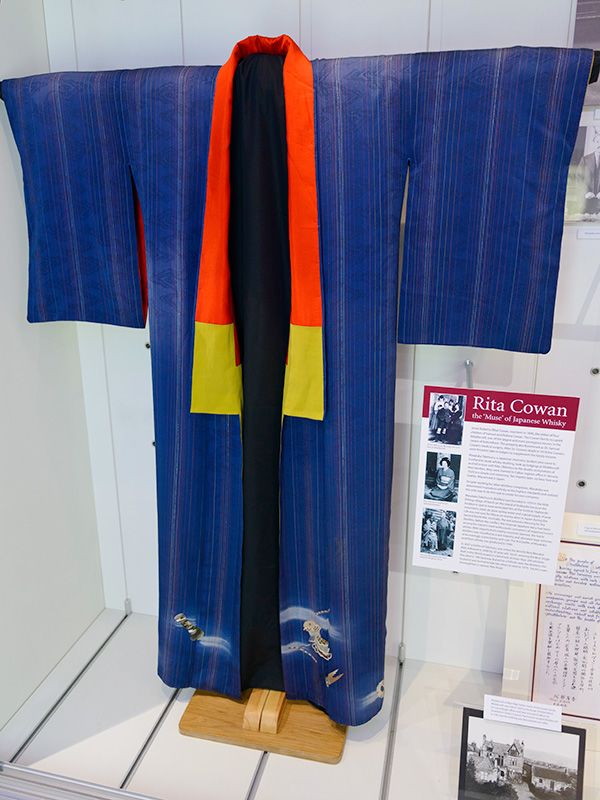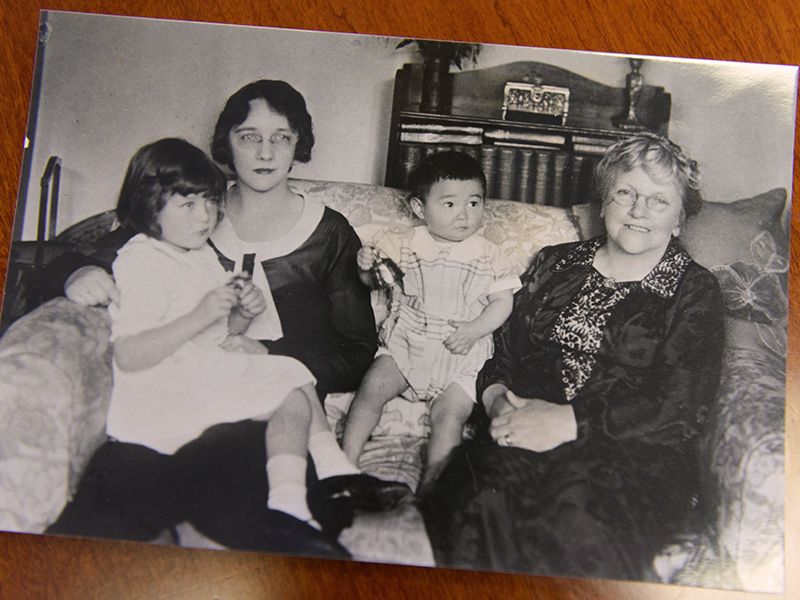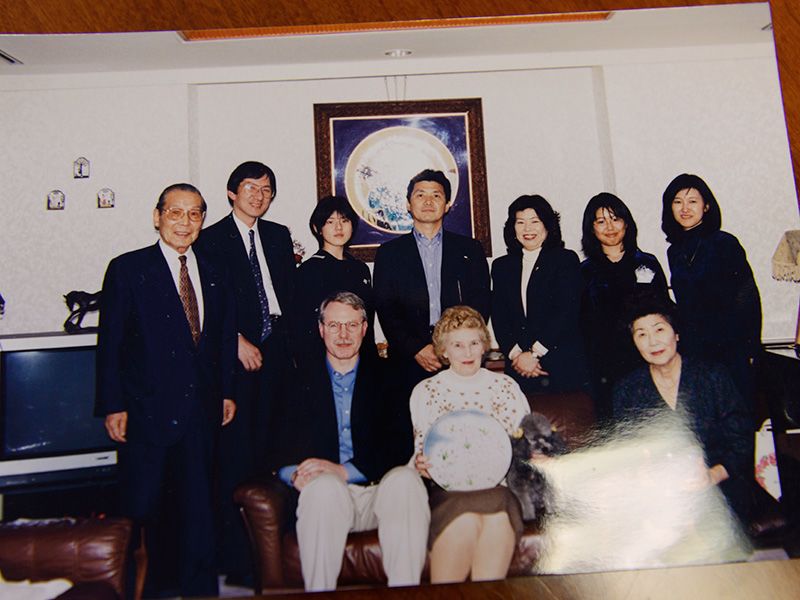
The Woman Who Took Whisky to Japan: Remembering Rita Cowan Taketsuru
Guideto Japan
Culture- English
- 日本語
- 简体字
- 繁體字
- Français
- Español
- العربية
- Русский
Putting “Kirky” on the Map
Rita’s hometown of Kirkintilloch—better known locally as Kirky—doesn’t have too many claims to fame. Its best-known son is Thomas Muir, the eighteenth century political reformer, and until the early 1980s few in the town knew it had a famous daughter too—albeit mainly famous in Japan.
But things changed when a local council official named Bobby Coyle spotted a group of Japanese tourists outside the council’s chambers. Intrigued, because it was rare for the town to welcome Japanese travelers, Coyle enquired as to why they were there. He quickly learned they were a group of Nikka employees who had come to see the Cowan’s old family home, Middlecroft, which was at the time serving as the local council offices.
The story is recorded in a double-page feature in the local newspaper, dated March 4, 1987. The headline was: “Why the Japanese Have Such a Yen for Kirky: The Lass Who Caused a Stir in the Orient.”
So began a special relationship between the distant towns of Kirkintilloch and Yoichi that continues today. In 1988, the Strathkelvin council (which governed the district that then included Kirkintilloch) signed a twin town agreement with Yoichi, the first such agreement between Britain and Japan. To mark the occasion, a delegation from the council travelled to Yoichi. “Apparently, they were greeted by a fully-kilted pipe band,” says councilor Diane Campbell.
 Kirkintilloch, East Dunbartonshire, June 24, 2014. (© Tony McNicol)
Kirkintilloch, East Dunbartonshire, June 24, 2014. (© Tony McNicol)
When new council offices were built in 1985, the Cowans’ elegant former home Middlecroft was demolished, despite some apparent talk of Nikka Whisky wanting to disassemble it brick-by-brick and ship it to Hokkaido. A purple-painted nightclub called Tantra now stands close to the spot.
All for Love
So it is that probably Kirkintilloch’s strongest remaining physical link to Rita is a kimono and obi sash she once owned. Presented to the town in the 1980s, they are now on display in the local Auld Kirk Museum.
 Kimono and obi once owned by Rita Taketsuru. Auld Kirk Museum, Kirkintilloch. (© Tony McNicol)
Kimono and obi once owned by Rita Taketsuru. Auld Kirk Museum, Kirkintilloch. (© Tony McNicol)
Peter McCormack, the museums development officer of the East Dunbartonshire council, says that the small display on Rita was only set up this July. With an NHK drama based on Rita’s life scheduled to begin soon, he’s hopeful the town might become a destination for some of Scotland-bound Japanese tourists. “Glasgow, Edinburgh, Kirkintilloch,” he jokes.
A kimono is, perhaps, an unusual item to find in a small Scottish museum. Many visitors are intrigued, although some take a somewhat stern view, says McCormack. “Some women see the kimono as a symbol of compliance and fitting in,” he explains, “but I see it as an interesting social artefact for the relationship of friendship between two countries.”
Certainly, locals are intrigued by the town’s unexpected link with Japan. “It’s a wee story,” he says. “People are interested in it.” Having said that said, he does note that there is an element of chagrin involved too. The story is, after all, about Scotland “giving whisky away to the world.”
“At least it was done for love rather than industrial espionage,” McCormack concludes. “It’s nice to think that it was done by a woman who was supporting her husband through thick and thin.”
NHK’s upcoming drama will focus on the many challenges that Rita had to face in a far and foreign land. “They had to bob and weave to make ends meet,” says Harry Hogan. “It was pretty tough in the early stages.”
Whisky Empire with a Century-Long Heritage
 Harry Hogan, great-nephew of Rita Taketsuru (Jessie Roberta “Rita” Cowan), with a glass of Nikka whisky. East Kilbride, Glasgow. (© Tony McNicol)
Harry Hogan, great-nephew of Rita Taketsuru (Jessie Roberta “Rita” Cowan), with a glass of Nikka whisky. East Kilbride, Glasgow. (© Tony McNicol)
Almost a century after Rita and Masataka met, though, the fruits of their struggles are available in Glasgow’s well-stocked whisky shops and bars and around Britain. When the young Taketsuru arrived in Glasgow—probably the first Japanese person ever to study whisky making—who could have imagined that his whisky would one day be holding its own against Scotland’s best?
That success has prompted more interest in Rita of late, says Hogan. “The whisky has done it—a few articles about how the Japanese are beating the Scots at their own game.”
I’ve brought a bottle of Nikka Pure Malt Black with me to Hogan’s office. It doesn’t take long for him to find a whisky glass.
“Very smooth, very nice,” he says.
But then, to my great surprise, he tells me that he has something for me too. He opens up a cupboard in the corner of the office and takes out small red box. It’s a blended whisky and tasting glass gift set from the Nikka-owned Ben Nevis distillery set at the foot of Scotland’s highest peak. Hogan had them made as presents for clients and associates of his company.
Something catches my eye among the gold lettering on the box.
“The family whisky,” it says.
(Banner image: Taketsuru Mastaka and his wife, Rita.)



